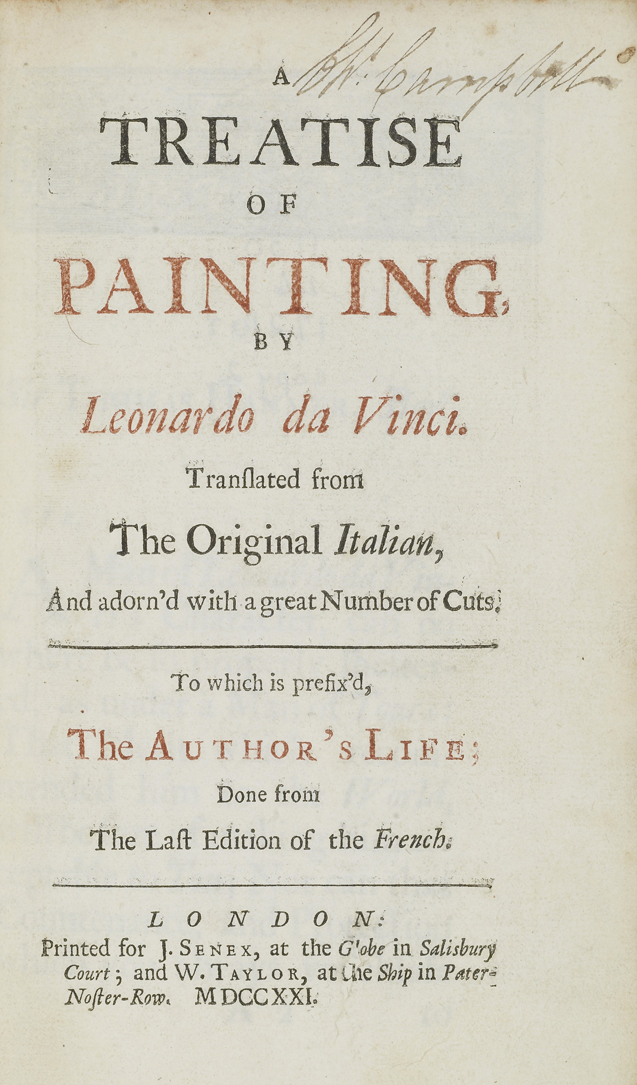
A Treatise on Painting, by Leonardo da Vinci
1721
Senex and Taylor, London
Chapter Display  |
|
Linear Perspective consists in representing by Lines and Strokes, the Figures and Bignesses, under which Objects are seen, at their respective distances; to this end determining how much the bigness of an Object is diminished, and how far its Figure is altered, at its several Degrees of distance, till it come entirely to disappear. Now Experience has taught me, that in viewing several Bodies, equal in Bulk, and ranged at equal distances from each other, the first will appear twice as big as the second, and that second, twice as little as the first, and twice as big as the third; and so of the rest: observing, however, that this does only hold upon the Supposition, that the Eye be placed at the same distance from the first, that the first is placed from the second; and that this distance do not exceed twenty Fathoms; for beyond twenty Fathoms, the equal Figure will lose three fourths of its bigness; and beyond forty Fathoms, it will lose nine tenths, and nineteen twentieths at the distance of sixty Fathoms. And thus the diminution will always keep the same proportion, as the distance grows greater. Now to apply what I have here said, to your use in Painting, observe that you be removed twice your Breadth from the Piece you are upon; for if you be only placed at half that distance, it will make too great a difference, between the first Fathoms and the second.